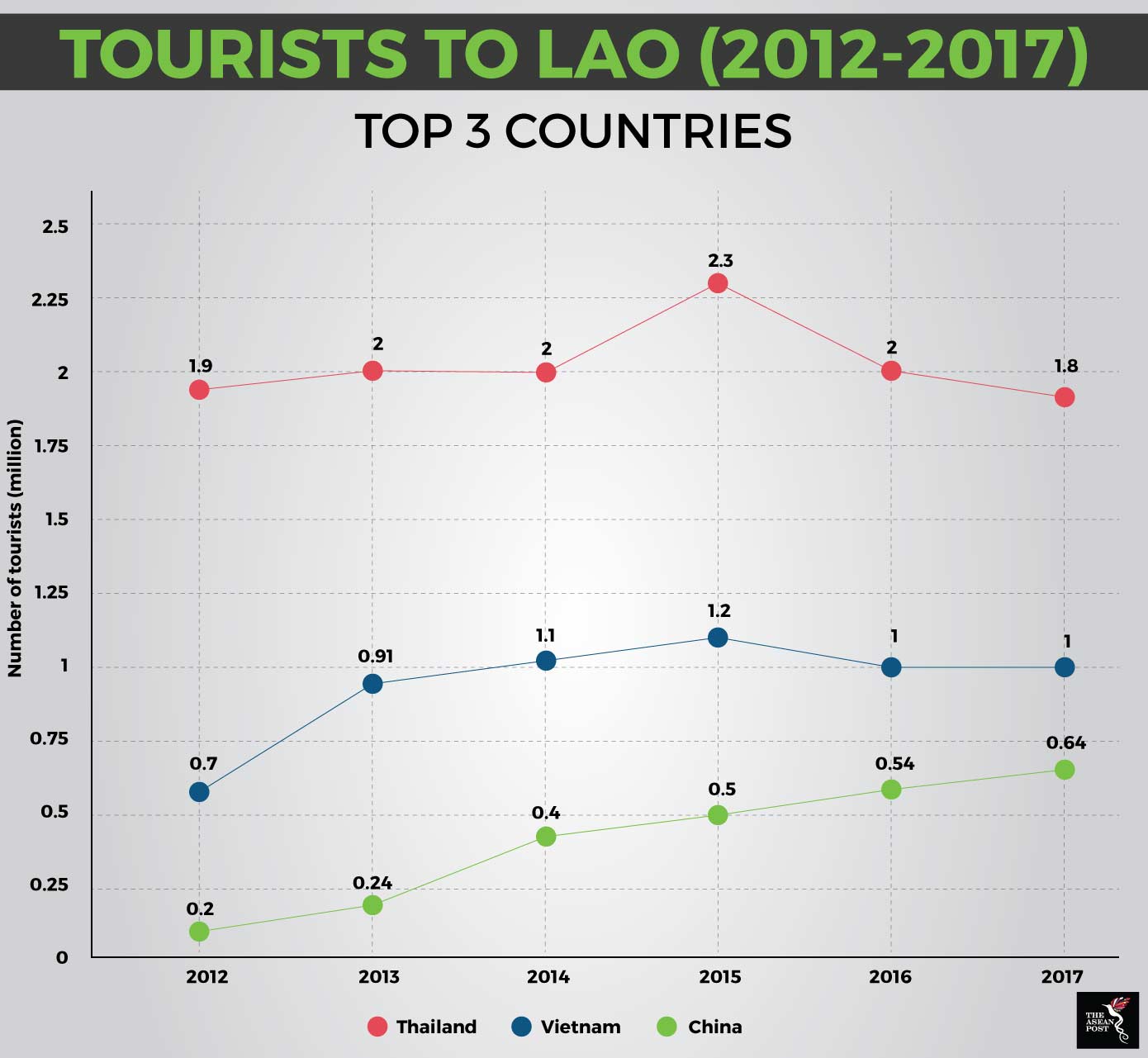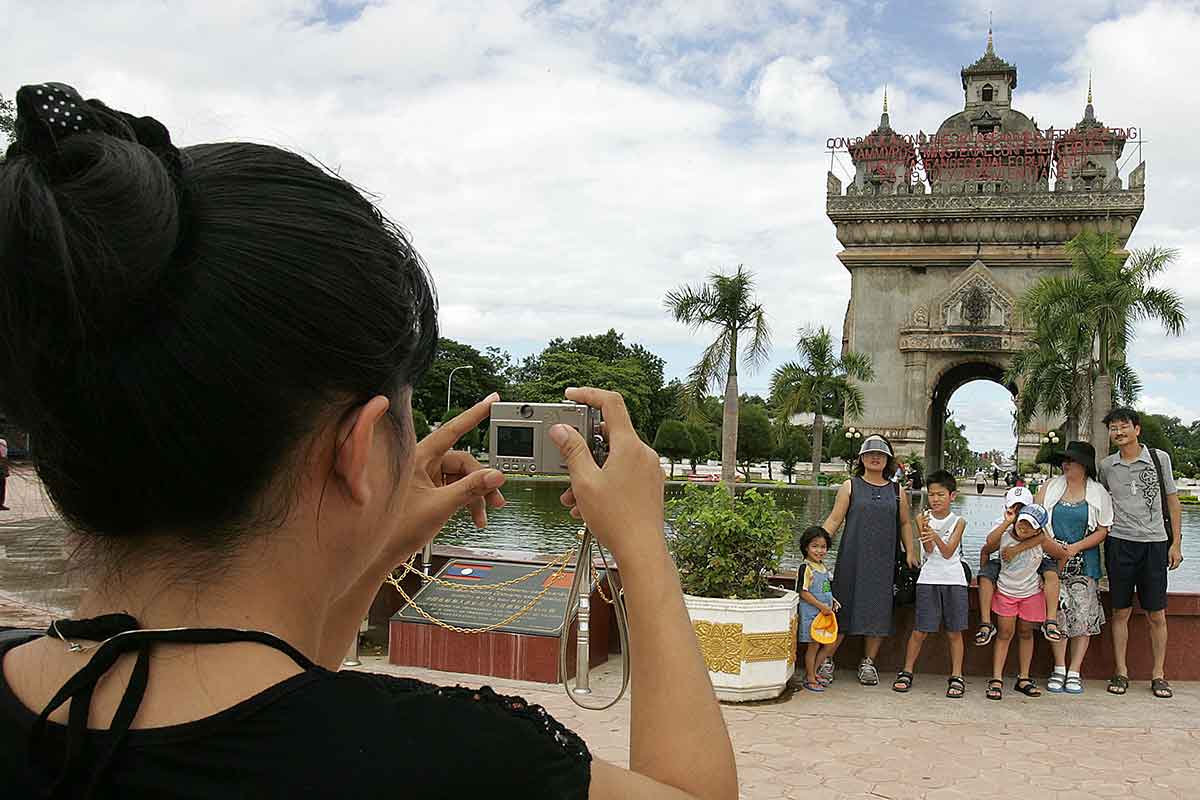Earlier this week, Lao announced a year-long plan to draw more Chinese tourists to the country through its Visit Laos-China Year 2019. The campaign is expected to be launched either late January, or during the Chinese New Year week-long holiday between 2 to 9 February. It’s also possible that it could even be launched on Chinese New Year day itself on 5 February.
Lao’s tourism sector has a lot of potential. Official statistics from the National Tourism Administration in Vientiane shows that millions of tourists come to Lao every year and that there was – at least for several years – sharp increases in the number of arrivals from 2009 to 2015.
Based on available statistics, Lao saw the highest number of tourist arrivals to the country in 2015 at 4,684,429, an increase of 12.6 percent compared to the previous year. Meanwhile, the highest increase in percentage was 25.1 percent in 2010 when the number of tourist arrivals climbed from 2,008,363 in 2009 to 2,513,028 the following year.
However, tourism hit a wedge sometime in 2016 through to 2017 when Lao saw sharp drops in the number of tourist arrivals at 10 percent and 8.7 percent, respectively. Reports in 2016 quoted an anonymous government official as providing several potential reasons for the decline. One was that the government of Thailand had been encouraging its citizens to take tours in their own homeland by offering special promotions and incentives for local tourism.
Looking to China
A likely reason Lao is looking at China to bump its tourist numbers up is because of what is happening in neighbouring Thailand. Thailand’s tourism sector contributes a significant portion to its economy and since 2012, the largest number of tourists have always come from China.
That number, however, dropped last year following a tour boat accident off Phuket in July 2018 that killed 46 of its 101 passengers on board including 86 tourists. All but two of the tourists were from China.
In comparison, China has been the third largest contributor to Lao’s tourism sector even before 2012. It is possible that because of the drop in Chinese arrivals to Thailand, Lao now sees the opportunity to bump up its own numbers. But there are certain things Lao needs to keep in mind when chasing this goal.
 Source: Various sources
Source: Various sources
Chinese tourism
China has been known to use tourism as an economic weapon. In 2017, South Korea witnessed this first-hand after China tightened its grip on the country’s tourism sector. The catalyst? South Korea’s decision to install the US-built THAAD anti-missile defence system that cost nearly US$7 billion.
China retaliated by cracking down on online travel agencies with newly-drafted regulations. According to reports, the regulation by the Chinese Ministry of Culture and Tourism would require online travel providers to improve rescue and emergency plans, better vet and manage their on-ground service providers, purchase liability insurance, and protect clients’ personal information.
Undoubtedly, this indirectly hurt South Korea’s tourism industry which also relies heavily on Chinese tourists. According to South Korea’s Tourism Organisation, in 2015, South Korea welcomed 4.7 million tourists from China. In 2016, this figure rose to 6.9 million. However, after the crack down, the number of tourist arrivals from China dwindled to a mere 3.1 million.
According to the World Travel and Tourism Council, the drop in Chinese tourists caused a significant loss of revenue for South Korea. In 2016, tourism contributed US$21.1 billion to South Korea’s coffers. In 2017, this source of revenue decreased to US$16.8 billion.
There is also talk of “zero-dollar tourism” by Chinese operators. Travel agencies in China offer free or very cheap tour packages, which cover meals and accommodation. Chinese tourists are attracted to the low cost and the notion that all their needs will be taken care of without having to learn a foreign language.
One of the drawbacks of these cheap tour packages is that Chinese tourists have to follow schedules set by the agencies which include compulsory shopping stops. This practice is not uncommon among tour operators in many countries. Prices of these packaged tours are often subsidised by the retail stores on the compulsory shopping stops.
In 2016, the Thai government decided to stamp out zero-dollar tourism, estimating losses of US$2 billion each year in tax revenue. Three companies were shut down, 2,155 buses were seized and several people were arrested for money laundering and operating illegal low-quality tours.
There is also the real possibility of these tourists becoming undocumented workers. On 28 November 2018, reports surfaced that the Senate labour committee in the Philippines was looking into the proliferation of presumed illegal workers from China. According to reports, the numbers had risen around Metro Manila to a degree that did not match official employment numbers from the Department of Labour and Employment (DOLE).
The Senate panel learned that the number of Chinese from the mainland entering the Philippines as tourists before obtaining short-term special permits to work in online gambling operations numbered in the tens of thousands.
While there are certainly advantages to be gained from enticing more Chinese tourists to come to the country, Lao should be alert to the possible dangers associated with it by looking at what has happened in neighbouring countries.
Related articles:
